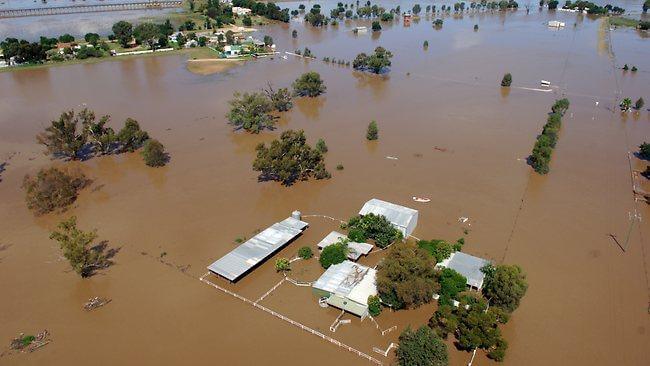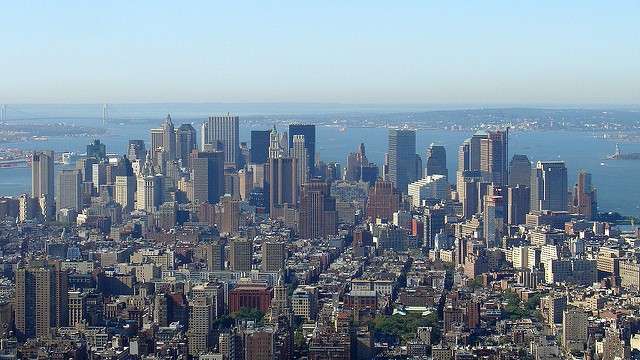The world has witnessed a technological revolution in the past few decades. There have been phenomenal changes in various aspects of human existence, from agriculture to industries, transportation, communication and more. However, one thing has not changed- nature is still all-powerful. There is nothing that mankind can do to prevent natural calamities such as floods, earthquakes, cyclones and volcanic eruptions. Such catastrophic events can be predicted to a certain extent but nothing can be done to stop them. Therefore, it becomes significant to know about the potential threats of such calamities so that their impact can be reduced. Let us talk about the way floods can impact the ecosystem and all that can be done to minimize the potential hazards of flooding.
Floods can influence the environment in more than one ways, both negative and positive. Being a natural ecological process, flooding plays a key role in bringing about biological diversity and productivity in the affected area. Simply speaking, it is nature’s way of retaining the balance in the ecology of the earth. However, the human race is more concerned about the negative impact of flooding because floods can result in adverse environmental degradation besides causing short-term damage to life and property. The damage that floods can cause to the environment is extensive and difficult to repair. This makes it crucial to understand the ways that damage can be caused and take adequate measures to significantly reduce, if not prevent it. Here are the ways that floods can impact the environment in the affected areas.
-
Deterioration of the health of the wildlife and livestock
The major impact of flooding is experienced in the forest areas that are the natural habitat of wildlife. Floods can adversely affect the well-being of the animals and plants that are housed in forest areas. Similarly, farming and ranching habitats are also susceptible to the flood water that inundates their living areas. While there is the danger of the plant and animal life being washed away with the heavy flow of water, the risk of water-borne illnesses is also high when the livestock is forced to stay in the polluted flood water until rescued. Heavy floods can even result in total loss of the wildlife and biodiversity in the affected region. Moreover, the surviving wildlife may have to struggle in the long run because of the loss of food and habitat potential in the ecosystem.
-
Soil erosion and sedimentation
Another adverse way in which flooding can affect the environment is by causing soil erosion and sedimentation, particularly in the riverbank areas. When floods come, fast moving water exceeds the riverbanks and causes widespread damage to the fertile top soils in the region. The probability of the soil being washed away and carried elsewhere is high, which leads to the risk of the land losing its fertility forever. On the other hand, sedimentation is another problem that the affected area may face as it can lead to clogging of the streams and riverbeds as well as reduction in the storage capacity of wetlands and riverbeds. Sediment results in long-term water pollution, which can cause damage to the natural habitat in the riverbed area. Extreme sedimentation can also have a temporary effect on the industrial, municipal and recreational water supply in the flooded areas.
-
Dispersal of local pollutants
Flooding can lead to dispersal of local pollutants in the region and affect the quality of life of the livestock and humans residing therein. When flood water flows at high speed, it carries debris and pollutants in the soil and spreads them around in the flooded area. Some of these pollutants may be harmful chemicals, agricultural pesticides and industrial wastes that are otherwise localized in the areas of origin. But when mixed with flood water, they can reach far-off locations and contaminate the soil and water. Contamination with toxic chemicals can jeopardize the human and animal life in the flooded area.
In addition to the threats to the environment and ecosystem, floods can also cause damage to infrastructure in the urban areas. Millions can get wasted because of the damage to roads, bridges, buildings and other constructions. People can lose their homes while workplaces can be damaged too. Considering the major risks that are associated with flooding, it becomes important to know whether your area is at risk and what is the extent of the risk. If you reside in the UK, then uk flood map is a reliable way to assess the flood risk in your area and be prepared if anything unfortunate happens. Flood maps provide relevant and accurate results based on realistic data related to floods in the specific area of interest.

























Leave a Reply